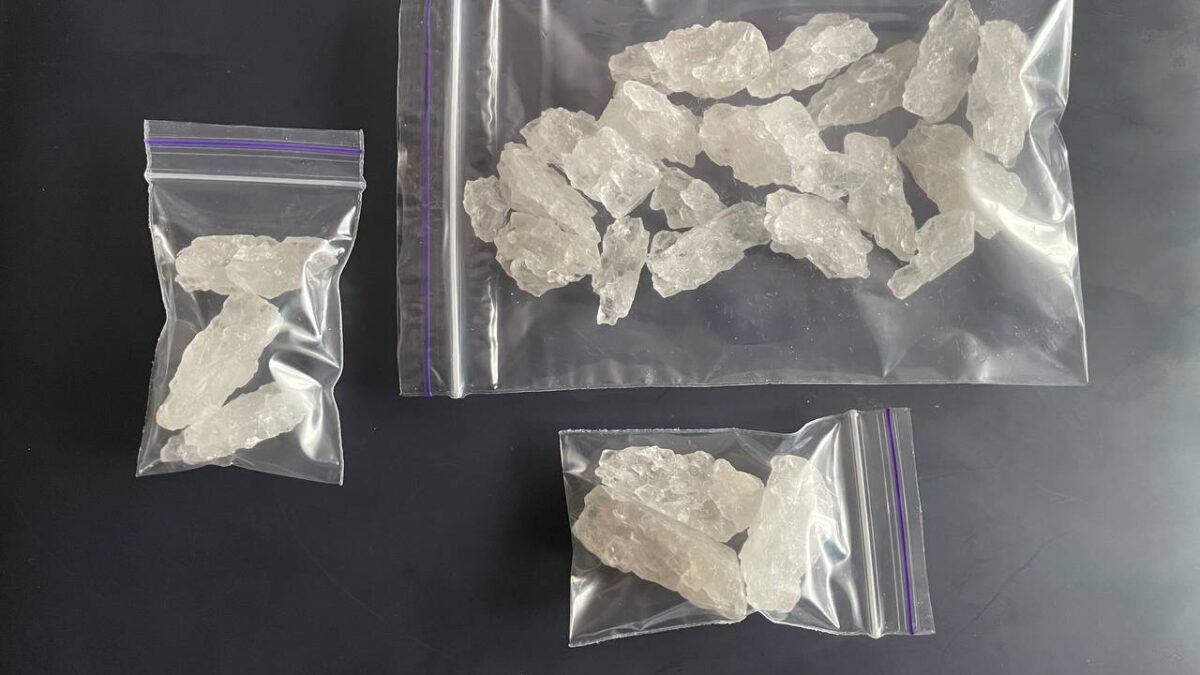methamphetamine vs amphetamine

Methamphetamine Formula

Meth Effects
methamphetamine vs amphetamine
Amphetamines are prescription drugs from the stimulant class of substances that are used in medicine to treat certain conditions. Methamphetamine, also a stimulant, is an illicit street drug that has no medical usage.
Both of these substances are included in the DEA Schedule II classification because they are prone to abuse and addiction.
All stimulants speed up the central nervous system, which can cause an increased respiratory rate, increased heart rate and a rise in blood pressure. Stimulants can also cause increased energy and focus.
Continue reading to learn more about the differences between amphetamines and methamphetamine, and the warning signs of a stimulant use disorder.

What is amphetamine?
Amphetamines are synthetic drugs that stimulate activity in the central nervous system through neurotransmitters like dopamine and norepinephrine. Amphetamines like Adderall, Ritalin, Dexedrine and Vyvanse are primarily prescribed for patients with attention-deficit hyperactivity disorder or narcolepsy.
Amphetamines are often sought out for non-medical uses, such as weight loss or to stay awake longer. However, students are the group that most commonly misuse these prescription amphetamines. In fact, nearly 13% of U.S. college students use amphetamines, referred to as “study drugs,” with the intent of improving their academic performance.
Amphetamines affect the brain’s reward system through the release of dopamine. The individual may become trapped in a cycle of substance-seeking behaviors, to not only extend the effects of the substance, but to suppress withdrawal symptoms. Continued non-medical use of amphetamines, the neural pathways or connections in the brain become altered, resulting in addiction.
Signs of amphetamine use disorder include:
- Irritability
- Disrupted sleep patterns
- Weight loss
- Headaches
- Numbness in arms or legs
- Hostile or aggressive behavior
- Exhaustion
- Diarrhea
- Constipation
- Verbal or muscle tics
- Dizziness
- Memory loss
- Impulsive behaviors
What is methamphetamine?
Methamphetamine may be more commonly known by street names like meth, crank and ice. Consumed by injection, snorting or smoking, this illicit synthetic stimulant is composed of amphetamine mixed with a variety of household substances. Drain cleaner, battery acid, paint thinner, or lighter fluid — all highly toxic to the human body — may all be used in the production of methamphetamine. The body has difficulty processing the ingredients used to produce methamphetamine, which can cause harsh psychological and physical effects.
Upon initial use, the individual can experience a powerful rush, including a burst of energy and confidence. When the substance wears off, known as meth crash, the individual experiences lethargy, insomnia, cravings, confusion and anxiety. Methamphetamine is highly addictive, with many becoming addicted to the substance almost immediately.
Long-term methamphetamine use is associated with serious health effects, including dental decay, premature skin aging, liver failure, psychosis, cognitive problems, and cardiac arrest.
Signs of methamphetamine abuse or addiction include:
- Paranoia
- Irritability
- Skin sores
- Chronic insomnia
- Sudden weight loss
- Nervous or anxious behavior
- High-risk behavior
- Hyperactivity
- Sagging skin
- Severe tooth decay
Stimulant withdrawal management and treatment
Whether the individual is dealing with an amphetamine use disorder or a meth addiction, the first step in breaking free involves the detox and withdrawal phase of recovery. Withdrawal management entails medical oversight and psychological support for the individual as they undergo withdrawal. There is no specific medication for stimulant withdrawal, but certain antidepressants, like Paxil, Prozac and Remeron, have been found to be helpful.
The severity of withdrawal symptoms depends on the duration of the substance use disorder, the type of substance and amount they consumed, as well as the individual’s general health. Generally, withdrawal symptoms peak within seven days and then begin to subside, lasting about two weeks on average.
While there are some differences between amphetamine and methamphetamine withdrawal symptoms, the most common symptoms include:
- Extreme fatigue
- Drug cravings
- Depression
- Anxiety
- Increased appetite
- Slowed cognitive functioning
- Vivid dreams or nightmares
- Excessive sleeping
- Suicidal ideation or behaviors
Methamphetamine addiction is a more complex SUD to treat than amphetamine addiction, due to the profound impact it has on the brain. After completing detox, the next step in continuing the recovery journey is to enroll in a comprehensive treatment program. Treatment for both will involve individual and group psychotherapy sessions, 12-Step program elements, holistic activities, life skills training and health and wellness counseling.
Following completion of a treatment program, the individual will engage in continuing care efforts that help reinforce recovery. These may include residing in sober living, attending outpatient psychotherapy sessions, participating in a recovery community and joining a support group.
Engaging in a variety of therapeutic activities helps the individual make the necessary changes to achieve a new life of health and wellness in recovery.
meth specification
Approved Color: Blue sky meth
supply ability: 1kg
Origin: Germany
Time Deliver: 2 days ( Free Shipping)
Product name: Blue sky meth
Brand name: methamphetamines
Purity: 99.99
Grade: AA
Storage; keep it in a cool, dry and dark place.
Code number: N06BA03
Director; Jacob
website: https://pervitinboss.com/methamphetamine-vs-amphetamine
Email; info@pervitinboss.com
Meth street names
Speed drug
Tina drug,
glass drug.

